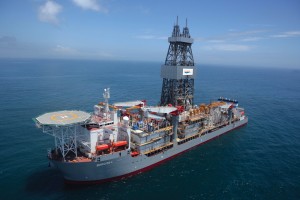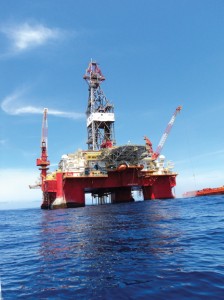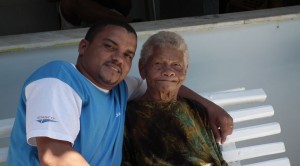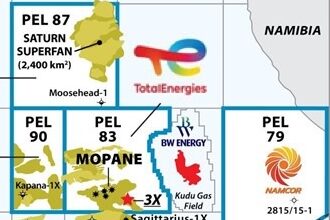People, infrastructure challenge Brazil growth

Trend toward ultra-deepwater pushes demand for high-spec equipment, highly trained local labor
By Katherine Scott, editorial coordinator
The offshore drilling industry has seen exponential activity growth in Brazil, and it’s all about deepwater and the pre-salt. “You can’t be in the deepwater market and not be in Brazil. Today the deepwater market in Brazil represents 50% of the worldwide demand for deepwater,” Kevin Robert, senior vice president of marketing for Ensco, said. “Brazil is not a question of ‘Is there opportunity?’ The opportunity is there. It’s more a question of how quickly can we get the right equipment in the hands of the operators.”
In particularly high demand is rig equipment that can go deeper – the kind that has been used in the ultra-deepwater Gulf of Mexico (GOM), for example.
“The trend in ultra-deepwater there is towards the 10,000 ft, primarily newer drillships and semis that have enhanced capabilities,” Mr Robert said. While the traditional rig market in Brazil has been for those that can operate in 6,000 ft of water or less for plays down to 300 ft, the pre-salt play has renewed focus on sixth-generation rigs that used to be built primarily for the US GOM ultra-deepwater.
“There has also been an explosion of drilling by independents in the existing basins in the shallow water – say, less than 2,500 ft of water – and that’s another place where we see demand for more equipment,” Mr Robert continued.
Regardless of water depth, drilling contractors find it increasingly important to stay in contact with operators to meet current and evolving expectations on new equipment and drilling technologies, including managed pressure drilling/underbalanced drilling and dynamic positioning capabilities.
“A major focus between us and operators in Brazil is on lowering nonproductive time and trying to lower their cost per well by using the latest technology and proven operating systems,” Mr Robert said.

Years, decades of work
Brazil’s consistent growth over the past decade has provided steady work for drilling rigs and is expected to remain a robust market for the foreseeable future.
“Certainly in the deepwater and pre-salt they are forecasting a lot of work for a number of years, or even decades,” James Hebert, area manager for Brasdril, a subsidiary of Diamond Offshore Drilling, said. His company has expanded its operations in Brazil from seven rigs just a few years ago to 14 now, which includes 13 semisubmersibles and one drillship, most with long-term contracts. “We had a rapid expansion in between late 2008 and early 2010.”
In the face of that expansion, Brasdril has built a new office in Macaé that includes a training center and new warehouse facilities. Teleconference capabilities also have been beefed up to enhance contact between the Houston office with day-to-day operations and emergency response, Mr Hebert said.
Ensco, too, has added an average of one rig a year to its fleet base in Brazil, going from five in 2005 to 11 today; this includes 10 semisubmersibles and one drillship. “That trend is there to continue,” Mr Robert said, adding that industry projections show 35 to 50 more rigs will be introduced to the Brazilian market by 2020.
Further, Brazil will, by definition, always be a 100% utilized market, as companies are not allowed to keep rigs in the country unless they are under contract, he said. “Brazil’s local regulations require any rig in the country to be under contract because you’re working under the import license of the operator,” Mr Robert explained.
Entry to the market also remains a barrier to entry, although having a long-term presence could make it easier for companies to sustain lower costs and efficient operations. “You don’t pop in and out of Brazil. You’re either there, you’re established, you can utilize your existing infrastructure to import a rig, or if you’re not there, you really have such a high barrier to entry. You see that with a lot of the newer competitors; their operating costs are significantly higher, and they are not as skilled at bringing rigs into that market,” Mr Robert commented.
Local content
With 190 million residents, Brazil’s population ranks fifth in the world, and the government has strict local content requirements on the percentage of rig positions that must be filled by natives. This continues to drive a significant demand for training in the country, as well as a high level of competition for competent personnel.
“We work hard to source, hire and train local labor to fill both the rig and shore-based positions,” Mr Hebert said. “It takes time, and with the level of activity that’s here, you have to work to attract them and hang on to them.”
Ensco finds that new entrants to the Brazilian market, under local-content pressures, often “have no choice but to try to hire away already-experienced locals,” Mr Robert said. “This is something operators in the area are concerned about. As the major contracting operator, Petrobras is trying to help the situation by insisting that new entries establish training centers and that they don’t try to just take from other existing drilling contractors, that they also develop new sources of personnel.”
As Ensco has increased its fleet in Brazil, the company has dedicated more resources to its local training center to ensure new-hires are set on the right path and pick up the right skills over time. Training for subsea operations, for example, has been added.
“As the rig count grows (in Brazil), the pressure on those skilled positions is growing. Therefore, we’re seeing increases in labor costs. That is not uncommon in this part of the cycle as customer demand increases and utilization rises. However it’s probably a little more exacerbated in Brazil right now because of the influx of rigs,” Mr Robert said.

For AETI, a provider of power delivery systems for drilling rigs and other offshore vessels, setting down local roots in Brazil has been a key strategy to offset the increasing costs of doing business there. “The key cost issues are the import duties and taxes related to importation of electrical components and equipment, and the local content requirements for many oil and gas related projects, especially with Petrobras and their subcontractors. In addition, the high cost of using foreign personnel and foreign materials make it difficult to operate in Brazil without a local operation,” AETI CEO and president Charles Dauber said.
In 2009, the company formed AETI Brazil with Five Star Services from Macaé, hiring more than 60 Brazilians to do local manufacturing, electrical construction and offshore services. “The growth of the oil and gas market in Brazil has required the use of sophisticated AC and DC power conversion systems to enable drilling and offshore production platforms operating in the ultra-deep, pre-salt fields to meet their contract requirements,” Mr Dauber added.

Trailing infrastructure
Infrastructure is another area that continues to lag E&P growth, challenging the speed and efficiency of drilling operations. With Brazil’s immense physical size, only slightly smaller than the US, an inconsistent infrastructure can mean significant time delays. “From a drilling standpoint, the wells are not that difficult. We do see logistical challenges due to the large and diverse nature of Brazil,” Mr Hebert said.
Companies often need to prepare for projects almost a half-year in advance due to infrastructure challenges, he continued, compared with a couple of weeks or months in areas with more infrastructure in place. “We have to import from overseas, and that’s time consuming to get it through customs… Your time horizon increases accordingly,” Mr Hebert said.
Investments in community
At the same time that companies are making significant investments in the E&P sector, some are finding that investments in the community can pay off as much as investments in new facilities. Ensco, for example, is actively involved in social programs in Brazil.
“Our employees do a lot of charity work and really get very involved with the community. It’s not just the industrial part of what we do, it’s also the human factor and making sure that as (our Ensco presence) grows, we’re supporting education, homeless shelters, etc,” Mr Robert said. “To be the employer of choice in a market where people have multiple job opportunities, it’s going to take more to succeed than just having the best rigs to work on.”




